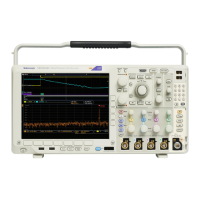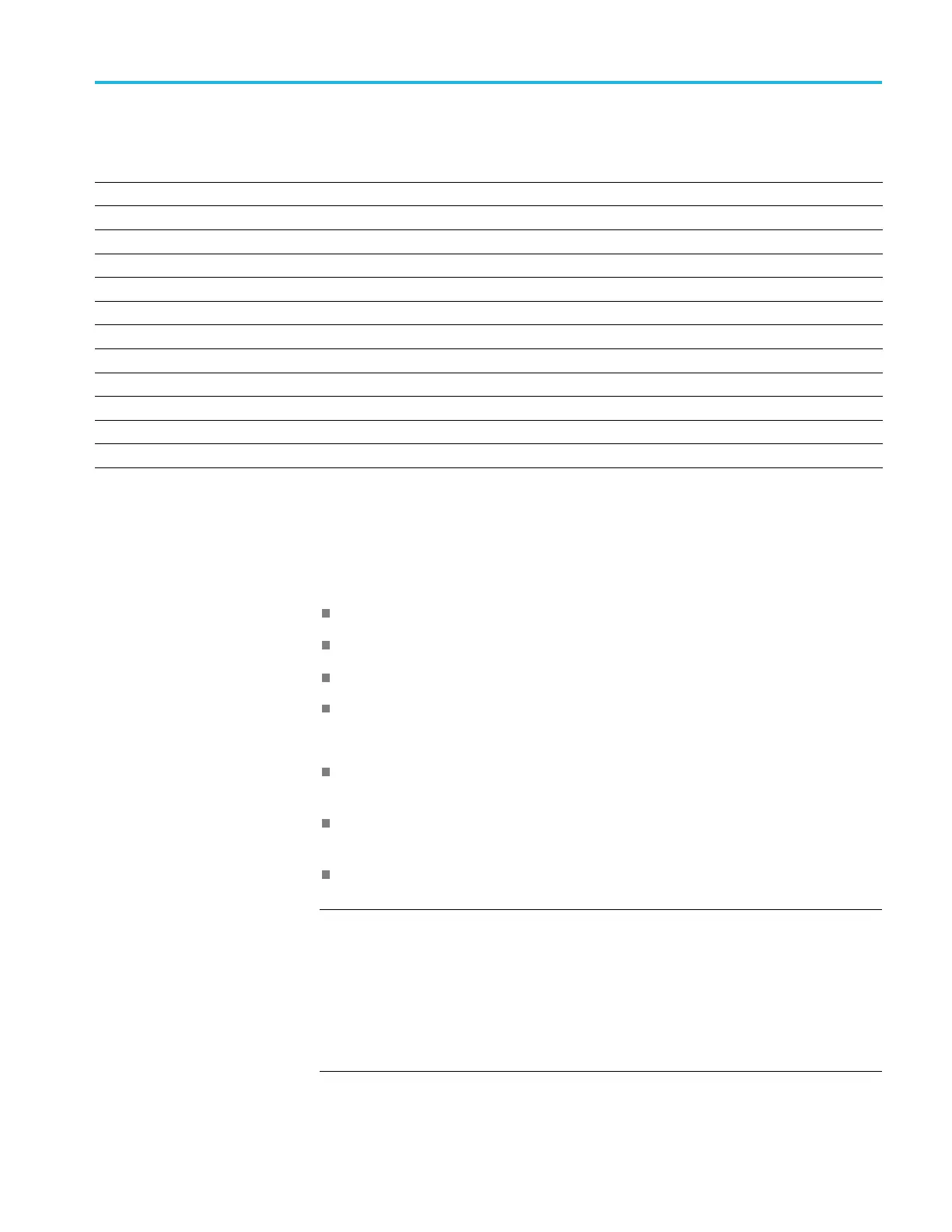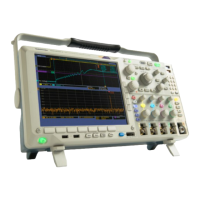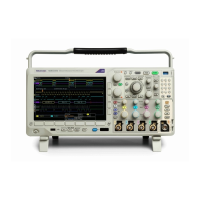Command Groups
Table 2-25: Eth
ernet Commands
Command
Description
ETHERnet:DHCPbootp This command specifies the network initialization search for a DHCP/BOOTP server
ETHERnet:DNS:IPADDress This command specifies the network Domain Name Server (Dns) IP address
ETHERnet:DOMAINname This command specifies the network domain name
ETHERnet:ENET:ADDress?
Returns the
Ethernet address value assigned to the oscilloscope
ETHERnet:GATEWay:IPADDress This command specifies the remote interface gateway IP address
ETHERnet:
HTTPPort
This command specifies the r emote interface HTTP port value
ETHERnet
:IPADDress
This command specifies the IP address assigned to the oscilloscope
ETHERne
t:NAME
This command specifies the network name assigned to the oscilloscope
ETHERnet:PASSWord This command specifies the Ethernet access password
ETHERnet:PING Causes the oscilloscope to ping the gateway IP address
ETHERnet:PING:STATus? Returns the results from pinging the gateway IP address
ETHERnet:SUBNETMask This command specifies the remote interface subnet mask value
File System Command Group
Use the commands in the File System Command Group to help you use USB
media. You can use the commands to do the following:
List the contents of a directory
Create and delete directories
Create, read, rename, or delete a file
Format media
When using these commands, keep the following points in mind:
File arguments are always enclosed within double quotes:
"E:/MYDIR/TEK00001.SET"
File names follow the non-case sensitive, MSDOS format:
[DRIVE:][\PATH\]filename
Path separators may be either forwardslashes(/)orbackslashes(\)
NOTE. Using back slash as a path separator may produce some unexpected
results, depending on h
ow your application treats escaped characters. Many
applications recognize the sequence of back slash followed by an alphabetic
character as an escaped character, and, as such, interpret that alphabetic
character as a control character. For example, the sequence "\n" may be
interpreted as a newline character; "\t" may be interpreted as a tab character. To
ensure that this interpretation does not occur, you can use double back slashes.
For example, "E:\\t
estfile.txt".
MDO4000/B/C, MSO/DPO4000B and MDO3000 Series Oscilloscopes Programmer Manual 2-27

